Indonesia is currently undertaking various road rehabilitation projects managed by both the government and private companies. One such project is in the Pertamina area, Duri City, Riau, which includes traffic roads and oil drilling areas.
Adequate road conditions are essential to support the traffic of vehicles transporting construction materials, operational vehicles, and stone haulers that often exceed load capacity. Road rehabilitation is carried out to repair damaged areas, preventing hazards for both road users and project teams. Such damage can be caused by weather changes, such as dusty roads during the dry season or slippery and soft roads during the rainy season.
There are two projects in the Duri area aim to identify effective methods for rehabilitating and improving road quality in these areas.
PT Harap Panjang is responsible for the road rehabilitation project in Bangko Bakti Village (KM 0), Rokan Hilir Regency, Riau, located about 4 hours from Duri City. The project covers approximately 16 km in length with a width of 5.5 meters, though not all sections require full reconstruction.
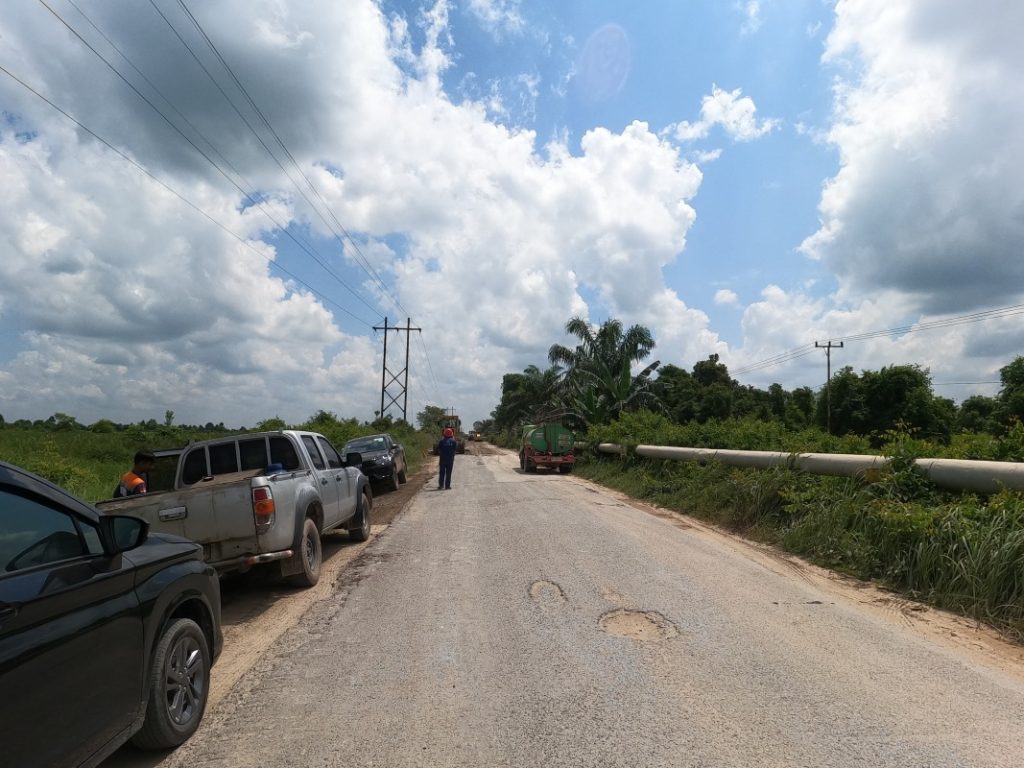
Another project is being undertaken by PT Hutama Karya, located in Pertamina Hulu Rokan, Bengkalis, Riau. In addition to traffic roads, the drilling area also needs stabilization.
The main objective of these projects is to identify effective methods for rehabilitating and improving road quality. The chosen method is the cold-recycling technique, which offers significant advantages over traditional road reconstruction methods.
Cold-Recycling Method Implementation
The cold-recycling method used in this project is performed in-situ, whereby the existing materials are recycled and processed on site without leaving the construction area. This approach makes the process more sustainable, reducing the need for truck trips to transport new materials, and accelerating the overall construction process.
Reconstruction begins with the spreading of cement using the XCMG XKC203 binding agent spreader with a specific volume of 5.5% of pavement mass. The XCMG XLZ2303S cold-recycler then milled the pavement to depth of 33 cm, while pushing a water truck dispensing 3% water volume of pavement mass into the drum chamber. The milled materials, cement, and water are mixed inside the drum chamber before coming out from rear of cold-recycler.

Next, compaction of recycled materials is carried out using the XCMG XS185SPD vibratory roller (operating weight of 18 tons) with padfoot shell to achieve good compaction throughout the think pavement.
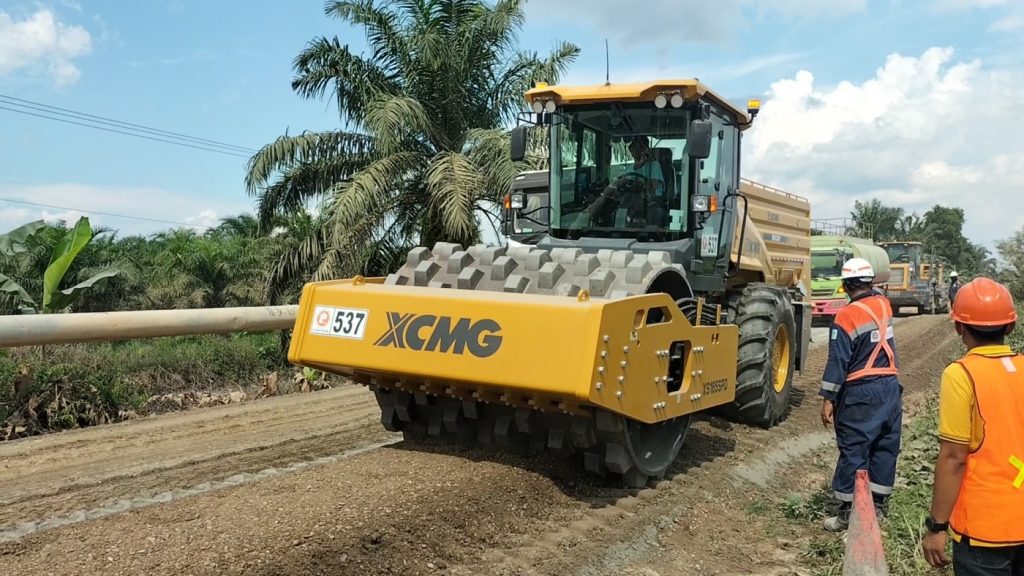
After that, the motor grader unit levels the road surface, determining the elevation and slope of the road. In the finishing phase, the final compaction is performed using a smooth drum compactor.
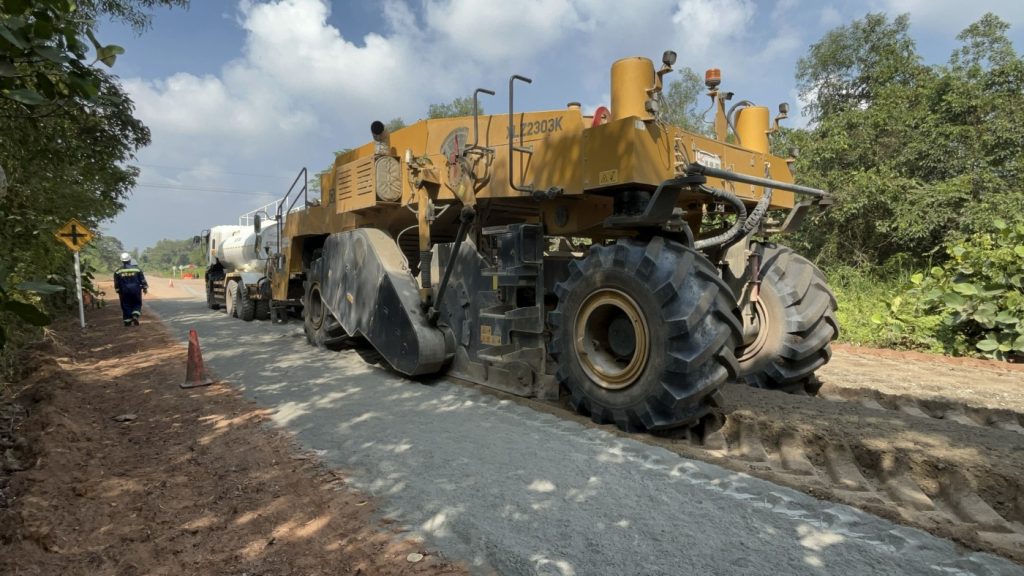
Meanwhile, PT Hutama Karya is also working on a separate project in Duri, focusing on rehabilitating traffic roads and the Pertamina oil drilling area. This project also uses the cold-recycling method, with the XCMG XLZ2303K machine (for traffic roads) and XLZ2303S (for soil stabilization in the drilling area).
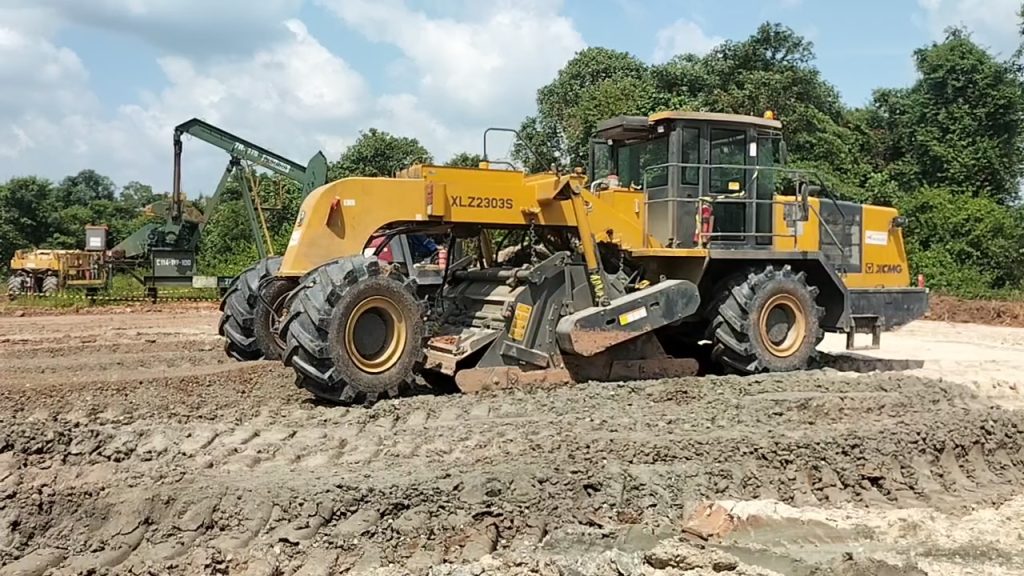
For the traffic road project, recycled materials are mixed with 5.5% cement and 13-14% water, while in the drilling area, the mix used is 5% cement without water to stabilize the soil.
The heavy equipment used in this project includes the XCMG XKC185 powder binder spreader and the XCMG GR135 motor grader. Compaction is performed using vibratory rollers, including in the oil drilling area.
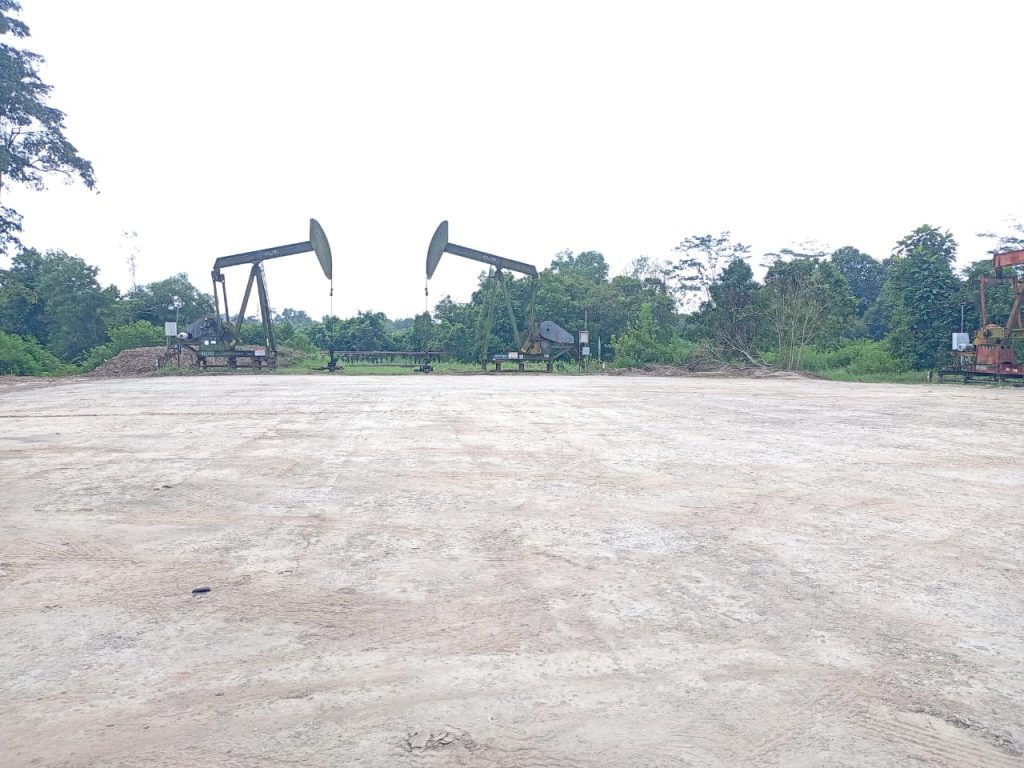
Heavy Equipment Used:
- Powder Binder Spreader: XCMG XKC185, XKC203
- Cold-Recycler/Stabilizer: XCMG XLZ2303S, XLZ2303K
- Single-Drum Vibratory Roller: XCMG XS185SPD, Dynapac CA610D, Sakai
- Motor Grader: XCMG GR135, CAT140H
- Water Tank
Conclusion
Overall, the equipment used in the cold-recycling process includes cold-recycler/stabilizer machines, cement spreaders, soil compactors, and motor graders, supported by water tanker trucks. By utilizing this innovative cold-recycling technique, the road rehabilitation project in Duri aims to provide effective and long-lasting solutions for the city’s infrastructure challenges.
